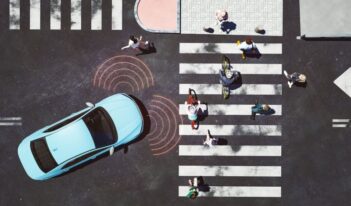
Policymakers should follow three steps when regulating artificial intelligence on a global scale.
The emergence of artificial intelligence (AI) has garnered significant attention in the field of regulation. As Cary Coglianese has pointed out, the administrative state is relying on digital automation powered by machine learning algorithms, which poses additional challenges related to the legitimacy of the modern administrative state.
AI, however, has also led to proposals for global cooperation. For example, Gary Marcus and Anka Reuel have called for developing a “global, neutral, non-profit International Agency for AI.” The ultimate goal of this proposal is to promote global governance standards for AI. Such an agency will require an effective global administrative law, which is still a work in process.
To create this global agency, policymakers should engage in a three-step process. First, they should systematize general administrative law principles related to AI. Second, they should promote global cooperation based on soft-law instruments. Finally, policymakers should design and implement global administrative institutions.
The relationship between AI and administrative law can be addressed from two perspectives. On one side, it is possible to analyze how to ensure general principles about the use of AI and other new technologies by public agencies. For instance, the Latin American Center for Public Administration and Development recently approved the Ibero-American Charter of AI in Public Administration, which compiles general principles. On the other side, it is possible to study how public agencies can regulate the use of AI by the private sector—which is the main focus of this essay. The recent EU AI Act illustrates the challenge of such regulation.
As Simon Chesterman suggests, some of the new problems that AI causes can be solved using traditional legal institutions. Since the publication of Fundamental Principles of Administrative Law in 1837 —the pioneering book by Giandomenico Romanogsi—the field of administrative law has aimed to facilitate collective action and prevent risks that threaten the common good. AI regulation is an area of opportunity for administrative law.
AI also falls under the umbrella of constitutional law. As some German scholars have concluded,
administrative law implements or concretizes constitutional law because public administration is the tool used by the government to achieve its constitutional goals. As a group of Argentinian scholars identified, the regulation of AI should be oriented toward the common good and based on the principle that AI’s risks must be identified and prevented proactively. In addition, a group of Spanish scholars created the Administrative Law and Artificial Intelligence Network and published a complete book on the subject.
To summarize, although the risks posed by AI are new—and in some ways, unknown—the tool with which governments can address those risks is well-known: the administrative state.
AI’s risks, however, are not limited to the state territory. On the contrary, the final goal should be to achieve a global public good: a reliable AI centered on human rights. This goal explains why several countries created in 2020 the Global Partnership on Artificial Intelligence, which is built around OECD Recommendations. These initiatives have led to the development of global soft law instruments founded on a set of principles aimed at the responsible stewardship of trustworthy AI.
From a public policy perspective, global administrative law is needed to address global collective risks. Although the administrative law system can help solve collective action problems facing individual countries, global collective problems need a global system of administrative law. As the Italian jurist Sabino Cassese explains, this is one of the most compelling topics of the 21st century.
The current international law system, however, is still based on the Westphalia paradigm, which says that each state has exclusive sovereignty over its territory. Because international law is based on the Westphalia paradigm, even multilateral treaties rely on the domestic capabilities of administrative law. The coronavirus pandemic remains the most recent example of the fragility of the multilateral system, just as the Global Preparedness Monitoring Board warned in September 2019.
In line with Marcus and Reuel’s proposal for a global AI agency, designing and implementing global administrative institutions becomes imperative. Three steps can help achieve this objective.
First, it is necessary to systematize the general principles of administrative law adopted at the domestic level based on the comparative method. The primary source of global administrative law stems from general principles of law drawn from the domestic order, such as transparency, accountability, efficiency, reason-giving, due process, and proportionality.
The general principles of administrative law can help policymakers design a global framework that ensures governance standards such as safety and reliability, transparency, accountability, and fairness. General principles ensure that AI fulfills the common good globally and that policymakers recognize what John Tasioulas calls a “humanistic” ethics for AI.
Once this global framework is defined, it will be necessary to move to a second step: promoting global cooperation between governments and civil society. One of the successful examples of global administrative law are transnational networks based on public-private partnerships. AI networks will facilitate one United Nations commitment: to promote global AI cooperation based on soft-law—or non-binding—instruments.
The institutional fragility of global administrative law has produced non-binding recommendations and good practices. For instance, the United Nations Educational, Scientific and Cultural Organization worked on non-binding global guidelines concerning digital platforms. Global administrative law, however, needs more than recommendations that rely on the capacity of each nation’s domestic administrative law.
The third and final step is the hardest: moving from soft-law instruments to a robust global agency with adjudication and rulemaking powers. The international responses to the pandemic and climate change demonstrate that soft-law tools could facilitate some level of coordination. Creating a global public administration, however, could be necessary to facilitate a global collective action to address the proliferation of AI.
One challenge policymakers face is that global administrative law structures are still based on treaties, and therefore, rely upon the coordination capacity of individual governments. This challenge is more significant in the Global South due to the weaknesses of some governments.
In the end, addressing the global risks posed by AI requires the application of administrative law principles on a worldwide scale. A global AI agency could harness the power of collective action to protect the world from the threats posed by AI. But such an agency will depend on the application of an effective global administrative law.




